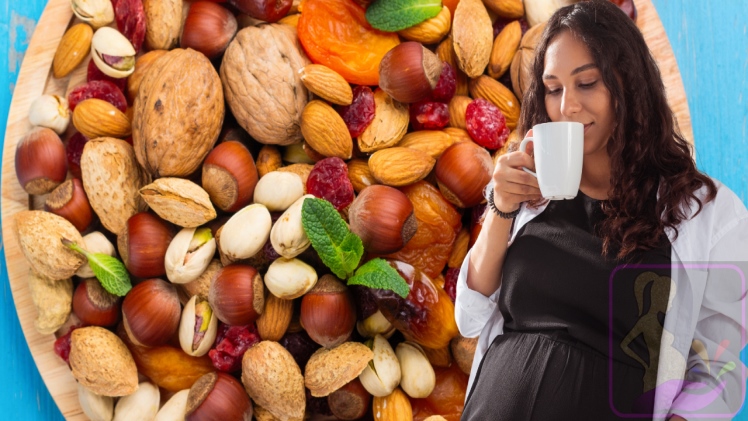Eight common types of dry fruits are cherished not only for their delicious flavors but also for their nutritional benefits. These dried fruits are widely used in various culinary applications and are popular choices for snacking and cooking. In this article, we will explore these eight dry fruits, highlighting their flavors, health benefits, and versatile uses.
1. Raisins:
Flavor: Raisins are small, sweet, and slightly tangy dried grapes.
Nutritional Highlights: They are a good source of natural sugars, iron, potassium, and antioxidants.
Usage: Raisins are popular as a snack on their own and are often used in baked goods like cookies, cakes, and bread. They also complement dishes like rice pilaf and salads.
2. Apricots:
Flavor: Dried apricots offer a naturally sweet and mildly tangy taste.
Nutritional Highlights: They are rich in vitamins A and C, potassium, and dietary fiber.
Usage: Dried apricots can be enjoyed as a standalone snack, chopped up in cereals, added to salads, or incorporated into baked goods like muffins and granola bars.
3. Dates:
Flavor: Dates are prized for their intense sweetness and a caramel-like flavor.
Nutritional Highlights: They provide energy in the form of natural sugars, along with dietary fiber, potassium, and magnesium.
Usage: Dates are often eaten as a quick energy-boosting snack. They are also used in smoothies, desserts, and as a natural sweetener in recipes.
4. Figs:
Flavor: Dried figs have a unique, honey-like sweetness with subtle nutty undertones.
Nutritional Highlights: They are a good source of dietary fiber, calcium, potassium, and antioxidants.
Usage: Dried figs are enjoyed as a standalone snack, paired with cheese and wine, or used in both sweet and savory dishes, such as salads and desserts.
5. Prunes (Dried Plums):
Flavor: Prunes offer a sweet, plummy taste with a hint of tartness.
Nutritional Highlights: Prunes are renowned for their digestive benefits due to their high fiber content. They are also rich in vitamin K and potassium.
Usage: Prunes are often consumed to support digestive health. They can be eaten as a snack, added to oatmeal, or used in baking recipes.
6. Cranberries:
Flavor: Dried cranberries are known for their sweet and tangy taste.
Nutritional Highlights: They are a good source of vitamin C, vitamin E, dietary fiber, and antioxidants.
Usage: Dried cranberries are commonly found in trail mixes, salads, baked goods, and breakfast cereals. They add a burst of flavor and color to various dishes.
7. Blueberries:
Flavor: Dried blueberries retain a sweet and slightly tart flavor, reminiscent of fresh blueberries.
Nutritional Highlights: They are rich in antioxidants, vitamins, and dietary fiber.
Usage: Dried blueberries are popular in granola, yogurt, cereal, and baked goods like muffins and cookies. They offer a burst of fruity goodness.
- Cherries:
Flavor: Dried cherries have a sweet and tart taste with a vibrant red color.
Nutritional Highlights: They are a good source of vitamins A and C, as well as antioxidants.
Usage: Dried cherries are used in a variety of dishes, including salads, oatmeal, desserts, and even savory dishes like chicken or turkey stuffing.
Health Benefits of Dry Fruits:
Dry fruits, including the eight mentioned above, offer several health benefits:
Rich in Nutrients: They are packed with vitamins, minerals, and antioxidants that support overall health.
Fiber: Dried fruits are a good source of dietary fiber, aiding digestion and promoting a feeling of fullness.
Natural Sweetness: They provide natural sugars, making them a healthier alternative to refined sugars and a source of quick energy.
Convenience: Dry fruits are portable and non-perishable, making them ideal for snacking on-the-go and for use in recipes.
Versatility: They can be used in various culinary applications, from snacks to desserts, adding flavor, texture, and nutrition to dishes.
Creative Uses of Dry Fruits:
Dry fruits can be incorporated into a wide range of dishes to enhance their flavor and nutritional value:
Trail Mix: Create your own trail mix by combining dried fruits with nuts, seeds, and a touch of chocolate or yogurt-covered raisins.
Baked Goods: Add dried fruits to muffins, cookies, bread, and granola bars for extra sweetness and texture.
Salads: Sprinkle dried fruits like cranberries, apricots, or figs onto salads to add a sweet and chewy contrast to fresh greens and vegetables.
Breakfast: Stir dried fruits into your morning oatmeal, yogurt, or cereal to elevate your breakfast experience.
Meat Dishes: Dried fruits like apricots, figs, and cherries can be paired with poultry or roasted meats to create sweet and savory flavor combinations.
Conclusion:
The eight dry fruits discussed in this article offer a delightful mix of flavors and nutritional benefits. Whether you enjoy them as standalone snacks, incorporate them into your favorite recipes, or use them to add a sweet touch to salads and savory dishes, these dried fruits are versatile and appealing additions to your diet. They provide a healthy dose of natural sweetness and contribute to a well-rounded and delicious culinary experience.


